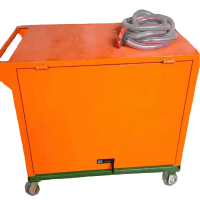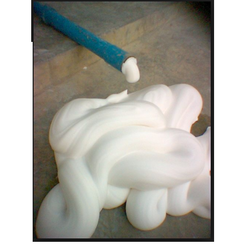Professional solutions on concrete addtives, Concrete Foaming Agent, Superplasticizer, CLC Blocks Additives, and foaming machine
(School was about to start, but the school was closed? British cellular concrete crisis, 104 schools in danger)
Recently, many parents of students in the UK have been very upset.
School is about to start in the next few days, but on Thursday, the British Ministry of Education suddenly ordered the closure of 104 schools because of "dangerous buildings" in those schools.
The buildings of these schools all use a building material called Reinforced Autoclaved Aerated Concrete (RAAC), a lightweight, air-cement-like material often used as a cheaper alternative to concrete.
(Reinforced autoclaved aerated concrete material)
The inside of the material is like a chocolate bar snack with a honeycomb structure.
This material was widely used in the construction industry in the second half of the last century.
However, over time, it was discovered that the structural integrity of this material would be lost when moisture penetrated, and its service life was only 30 years.
In other words, many houses built with it are no longer safe.
(This material collapses)
For many years, the safety issues of reinforced autoclaved aerated concrete have been ignored.
It was not until 2018 that the reinforced autoclaved aerated concrete roof of a primary school in Kent collapsed, which attracted the attention of the Ministry of Education, which began to investigate the safety hazards of this material.
(The roof of a primary school collapsed in Kent in 2018)
Last year, the Department for Education organized a survey to determine how the material was used in schools.
Survey results in June showed that 572 schools in the UK may have used reinforced autoclaved aerated concrete in their school buildings and that school buildings with 700,000 students "need to be rebuilt."
(Roofs using this material collapsed)
Currently, 156 schools have been identified as using this material, 52 of which have taken remedial measures and do not need to be closed. The remaining 104 have been ordered to be closed by the Ministry of Education.
(A school cordoned off areas with safety risks)
These schools require temporary or long-term renovation work and may be closed for as little as a day or as long as several months.
For example, one school renovated a corridor using this material, which would affect access to the library and gymnasium. However, the project was simple and the start of school was only delayed by one day.
However, the Ministry of Education also said that "a small number of schools" had to be "fully or partially relocated."
For example, during the weeks when the school building is being renovated, students can take classes at nearby schools, community centers, and vacant office buildings.
The Ministry of Education told parents that most schools will not be affected and children can still attend school as usual in September.
Online classes, such as those organized during the COVID-19 epidemic, will be used as a last resort and will only be conducted briefly. Face-to-face teaching will still be possible as much as possible.
However, due to "operational reasons," the Ministry of Education did not disclose the specific school list, which caused parents anxiety.
Parents and the media still need to complete an incomplete list of schools.
In the past two days, the Ministry of Education's order has caused a stir and has caused dissatisfaction among many British people, especially parents and schools.
Their anger is mainly directed at three aspects –
First, before the Ministry of Education took action, children had been attending classes in unsafe school buildings for a long time, which frightened parents.
Secondly, moving to other places for classes requires additional rent, and the government once said that schools should pay for it themselves.
After causing dissatisfaction with the school, they said the government would pay for it.
Finally, the Ministry of Education allowed schools to renovate their buildings during the past summer vacation so that students would not have to delay their studies.
However, the Ministry of Education did not act during the summer vacation, and the school was about to start again. Schools were suddenly asked to deal with such a complex issue, and the arrangements of students and parents were also disrupted.
A lot of people have been complaining about this online recently.
"Kids are going back to school in a few days! It's unbearable to have schools doing this now."
(Screenshot from X@Andrew_F_Smith)
"How long have our children been in danger in schools made of 'crumbling' concrete? When did the government know about it? What steps did they take? Did anyone notify parents that their children were in danger? OMG!! "
(Screenshot from X@JaneBurley22)
"My school, built in the 1950s, closed without notice in the 1970s due to safety concerns. I can't believe this is still going on."
(Screenshot from X@announcer_stef)
"They have six weeks to announce it and deal with it, but to wait until it's time to go back to school will cause more disruption to teaching."
(Screenshot from X@oszieuk)
Issues involving schools are just the beginning.
Even more troublesome is that many public buildings across the UK also use reinforced autoclaved aerated concrete, such as hospitals, courts, and police stations. These buildings also have safety hazards and face reconstruction problems.
(Reinforced autoclaved aerated concrete)
The material is used in more than 250 NHS hospital buildings in Scotland, and investigations are underway to establish the extent of the problem.
(This report mentioned that seven hospitals had safety hazards due to the use of this material and needed to be renovated)
Harrow Crown Court in north-west London has been closed indefinitely after the material was found to have been used.
(Harrow Royal Courts of Justice)
In the future, schools and some public buildings may have to be renovated. What is affected now is students, and more people may be affected in the future?
The role of concrete admixtures
Concrete admixtures are chemicals added during the concrete preparation process to improve the properties and properties of concrete.
Concrete admixtures play an important role in improving the workability of concrete, adjusting the setting and hardening speed, improving physical and mechanical properties, improving durability and imparting special properties. This makes concrete admixtures increasingly widely used in the construction industry, which is of great significance for improving project quality, reducing labor intensity, shortening construction periods, and improving the durability and environmental protection of concrete.
Supplier of Lightweight Concrete Additives
TRUNNANO is a supplier of Concrete Additives with over 12 years experience in nano-building energy conservation and nanotechnology development. It accepts payment via Credit Card, T/T, West Union and Paypal. Trunnano will ship the goods to customers overseas through FedEx, DHL, by air, or by sea. If you are looking for high quality concrete crack reducing admixture, please feel free to contact us and send an inquiry. (sales@cabr-concrete.com).
(School was about to start, but the school was closed? British cellular concrete crisis, 104 schools in danger)








